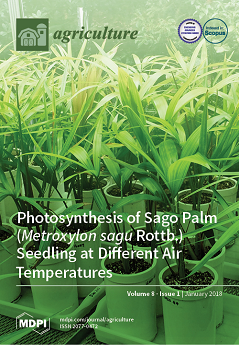Biopesticides have attracted attention in pest management in recent decades, and have long been promoted as prospective alternatives to synthetic pesticides. Biopesticides have also attracted great interest in the international research community, with a significant increase in the number of publications devoted to
[...] Read more.
Biopesticides have attracted attention in pest management in recent decades, and have long been promoted as prospective alternatives to synthetic pesticides. Biopesticides have also attracted great interest in the international research community, with a significant increase in the number of publications devoted to the subject. Recently, new substances, like strains of the fungus
Talaromyces flavus SAY-Y-94-01, extracts of the plant
Clitoria ternatea (butterfly pea), products of the fungus
Trichoderma harzianum, products of the bacterium
Bacillus thuringiensis var.
tenebrionis strain Xd3 (Btt-Xd3), the alkaloid compound oxymatrine, fermentation products of the bacterium
Lactobacillus casei strain LPT-111, stilbenes accumulated in grape canes, and olive mill wastes, have been reported in the literature as promising compounds for use as biopesticides, but more field research is required to assess the effects on specific pest problems under diverse cropping systems. Nevertheless, biopesticides have not yet reached the desired level of use, whereby they could displace the dominance of chemical pesticides, given that the commercialization of new products in the market is lagging behind. Currently, biopesticides comprise a small share of the total crop protection market globally, with a value of about $3 billion worldwide, accounting for just 5% of the total crop protection market. Fewer biopesticide-active substances are registered in the European Union (EU) than in the United States, India, Brazil, or China, due to long and complex registration processes in the EU, which follow the model for the registration of conventional pesticides. Nanoformulations and microencapsulation technologies can improve the stability and residual action of biopesticide products, and this could increase their field use. Regulations that promote registration of low-risk compounds with the provision of incentives could also facilitate commercialization and availability of biopesticides in the market.
Full article





